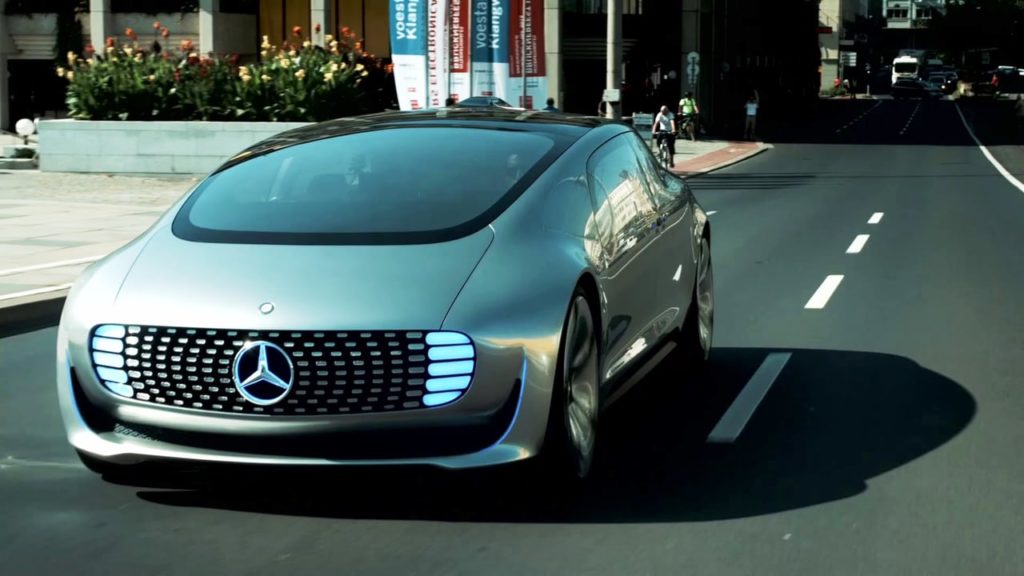3 Technologies Set To Change The Future Of Driving

The advancements in technology are truly mind-blowing. Okay, that was a bit of an overarching statement and, as we all know, sweeping statements like that never really hold any gravitas, especially if you are looking at the smartphone world and thinking nothing innovative has been unveiled in about four years now. However, the automotive industry is totally different. This is a field where new technologies are being unveiled with every new model of car, whether it be to do with safety or practicality or just for the sake of being awesome.
But while we have come to expect technology to keep pushing the boundaries in ways we never thought possible, one thing that has taken us by surprise is the emphasis car manufacturers have placed on this area of design. It is as if they not only realise this is what the consumer wants and needs, but this is where the industry is heading and the race is well and truly on. In the last twelve months alone, we have seen how technology has completely revolutionised this industry.
Forget about the past, though, what does the future of the car look like?
Of course, we don’t know for sure, but judging by the direction certain manufacturers are heading and the tests certain companies are carrying out, we can have a pretty good stab in the dark, and that is exactly what we are about to do.
Total Communication
Two of the things we may well see in the future is vehicle-to-vehicle and vehicle-to-infrastructure communication systems. We say this because car manufacturers and governments alike are looking into technologies that would enable this sort of total communication. The reason they are looking into this is simple: the age of autonomous cars is nearly upon us and this level of constant connection is what will make going driverless a success.
Just think about it for a minute or two, though. You’re heading toward to a set of traffic lights, where a car suddenly appears from the right-hand side and runs a red. With cars talking to each other, your car could be sent a signal to warn it of a collision and then automatically apply the brakes to avoid a collision. That is badass. What is equally badass is having your car talk to the infrastructure around you. For instance, it could be that your car gets sent a signal telling it about a car crash up ahead, before accessing real time traffic information and using this to reroute you on the fastest possible route.
These advancements in tech could revolutionise the way in which we drive, making journeys more efficient while also improving road safety by a staggering 79%, according to Green Car Congress.
Autonomous Cars
We dropped a hint into the aforementioned point, but to not delve into a future where cars drive themselves would be criminal. The amazing thing is, the technology is already available. So many manufacturers have been racing to reach this end game first that the movement has benefited no end. Volvo, Uber, Tesla, Google, General Motors – all of these big names are involved in making the dreams of many a Hollywood movie into a reality for us to enjoy.
Like we mentioned above, the secret to their success will be in total communication, but it is also to do with computerised maps, the ability to read road signs, recording images of the roads and making smart decisions faster than humans ever could. This will all be made possible through cameras, radars, lasers and the ability to process vast amounts of data at incredible speeds. This has already been achieved by the likes of Google to some degree.
The benefits of going down this route are almost infinite, but the two big ones are safety and efficiency. At the moment, car accident lawyers like the Kindley injury firm have to pull together detailed cases in order to successfully navigate the case surrounding an accident. But with driverless cars, not only will human error be wiped out o the equation – reducing accidents by 95% – it will also be easier to determine who was at fault. As for efficiency, the chance to use that time we usually spend driving to better effect – whether for business or pleasure – will give us more available hours each day. Time is the most valuable commodity we have and we are on the verge of creating more of it.
AR Dashboards
Augmented reality has become a big part of our daily lives and it has become so without us really realising. Take Snapchat, Instagram and Pokemon Go, for example. These are huge businesses built on their ability to augment reality. Well, with the technology already available to us, surely it is just a matter of time before our cars start displaying information on our windscreens for us to digest.
As far as we are aware, BMW is the closest to actually implementing this in their future models, and what they aim to do is have windshields and dashboards that will have the ability to identify objects on the road ahead and then relay this to the driver. It could be that a service station appears on the side of your windscreen with details of how far away it is and what services it offers. It could be that a red warning sign appears when you are approaching a car too fast, with collision avoidance information to help you stay out of harm’s way, such as arrows and lane assist. It could be that you get guided into the right lane so that you never miss an exit. That’s just one side of the AR game.
The other area of the automotive industry that could seriously benefit from this sort of advancement is more to do with maintenance. BMW is once again leading the way on this, from what we can tell, and what they are aiming to do is supply glasses to their technicians that, when worn, will tell them what parts need to be replaced or fixed, with instructions on how to do so. Yes, this is being designed for technicians to start with but a few years down the line and they will be available to car owners, meaning more and more car repairs will be done at home.
The advancements in technology are coming thick and fast and where they will go from here is anyone’s guess. The important thing to note, however, is that the future we’ve seen in sci-fi movies could be here sooner than we think and there is one overarching theme that links them all; safety. Manufacturers know that, without being able to prove these advancements drastically reduce the number of accidents and fatalities, there is very little point in developing such tech.






